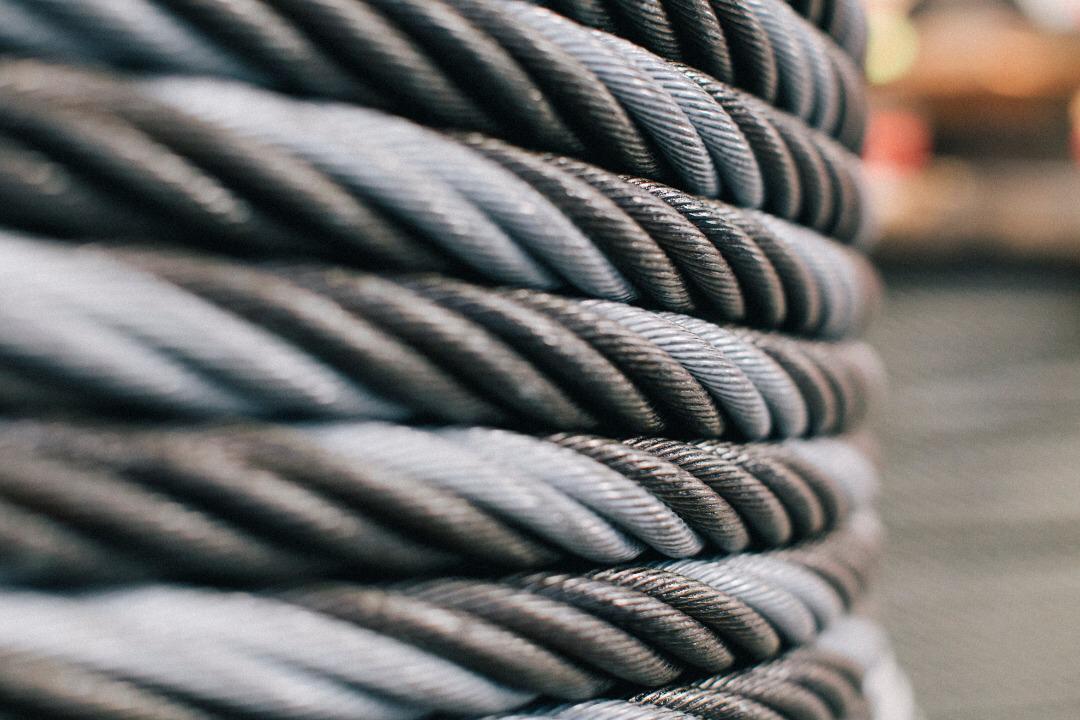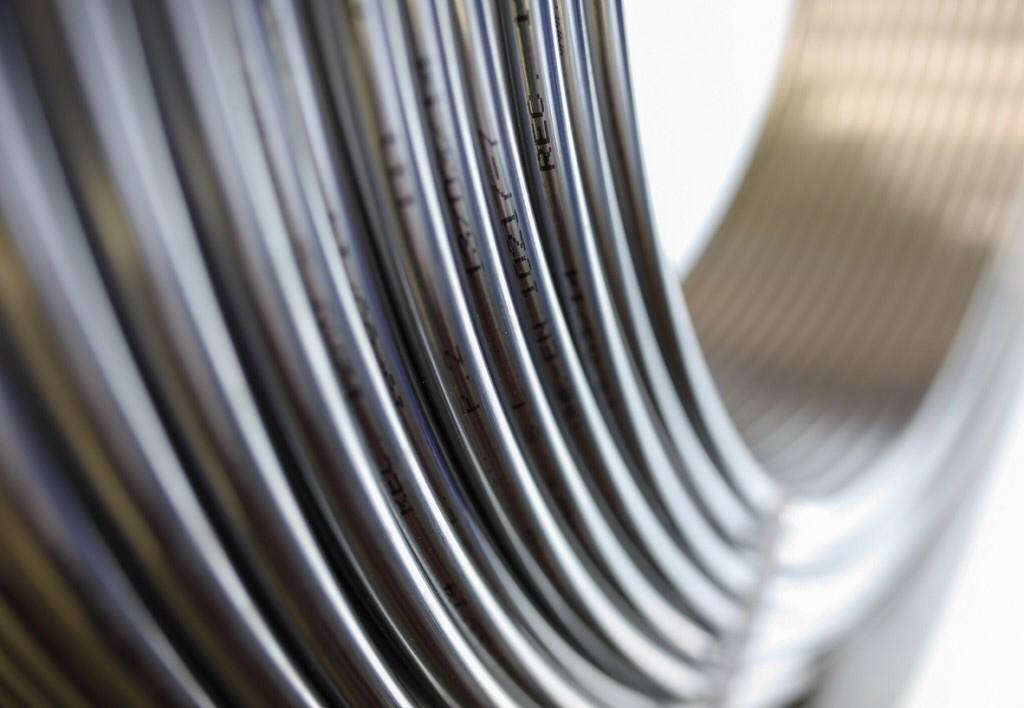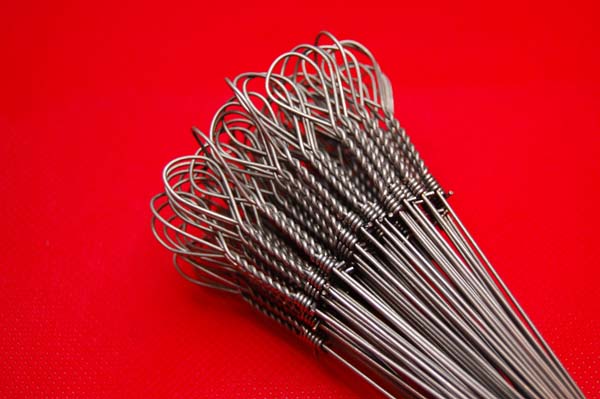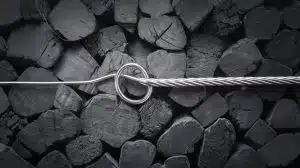10 Key Points for Buying Galvanized Wire: A Comprehensive Guide for 2024- part 1
Hello and welcome to APIT website!
We greatly appreciate your visit to our site to read the article “10 Key Points for Buying Galvanized Wire: A Comprehensive Guide for 2024“. Our goal is to provide useful and practical information to help you choose and purchase the best galvanized wire.
In this article, we will examine the important points you should consider when buying galvanized wire. These points include wire quality, thickness of galvanized coating, production standards, price, and other factors. By reading this article, you will gain a better understanding of how to select the appropriate galvanized wire for your project.
We are also pleased to announce that the second part of this article will be published soon. In part two, we will provide more details about the characteristics and applications of galvanized wire. We highly recommend following the second part as well to gain more complete information in this field.
We hope you find this article useful and that it assists you in purchasing high-quality galvanized wire. We appreciate your attention and look forward to your visits to other valuable articles and content on the APIT website.
Introduction: The Importance of Using Galvanized Wire
In today’s world, the construction of various projects, including power transmission lines, bridges, metal structures, and many other cases, requires the use of durable materials resistant to environmental factors. One of these vital materials is galvanized wire. This type of steel wire is designed with a zinc coating to resist corrosion and rusting.

The importance of using galvanized wire can be examined from several aspects:
- Long service life: Due to its protective zinc coating, these wires can withstand harsh weather conditions for many years without the need for replacement or repair.
- Safety and reliability: In projects where, human lives are at stake, such as bridges and power lines, using high-quality and reliable materials is crucial. Galvanized wire provides this assurance.
- Economic efficiency: Despite the higher initial cost, using galvanized wire is much more economical in the long run than other options, as it requires less maintenance and repair.
- Environmentally friendly: Since these wires are resistant to rusting, there is no need to use corrosive chemicals to remove rust, which is an environmental advantage.
Considering these importance factors, choosing galvanized wire of appropriate quality can be a smart investment for long-term construction and civil projects. To learn more about this product, we will discuss its details in the following sections.
What is Galvanized Wire? Definition and Applications
Galvanized wire is a type of steel wire covered with a metallic zinc coating. This coating is usually made of zinc or a zinc alloy, applied to the steel core by hot-dip or electrolytic methods. This process is known as “galvanizing” and aims to protect the steel against corrosion and rusting.
The precise definition of galvanized wire is: a steel strand with a diameter of less than 9.5 millimeters, coated with a layer of zinc.
Applications of Galvanized Wire
The applications of galvanized wire are diverse and extensive. Some of the most important uses include:
- Construction: These wires are used in reinforced concrete, metal structures, bridges, power transmission towers, and power lines.
- Marine industries: Due to their resistance to saltwater and ocean waves, they are used in docks, offshore platforms, and boats.
- Agriculture: Galvanized barbed wire is used to enclose farms, gardens, and livestock facilities.
- Architecture: It is used in stair railings, fences, metal meshes, and decorative elements.
- Heavy industries: It is used in mining, power transmission, steel mills, and other heavy industries.
- Automotive industry: It is used to make springs, cables, and other durable metal parts in vehicles.
- Rail industry: It is used in the construction of railway tracks, pedestrian bridges, and other rail transportation structures.
- Oil and gas industries: It is used in pipelines, platforms, and drilling equipment due to its corrosion resistance.
- Aerospace industry: It is used to make cables and structures for spacecraft and rockets.
- Cable and wire production: Galvanized wire is used in the manufacture of electrical cables, steel cables, and wire strands.
- Communications industry: It is used in the construction of telecommunication towers, radio towers, and antennas.
- Sports facilities: Tennis courts, sports netting, security fences, and other stadium equipment are made from this wire.
These examples demonstrate that galvanized wire is a practical and widely used product in many industries today that require durability, resistance, and high strength.
Considering the unique properties of galvanized wire, such as corrosion resistance, high durability, and substantial strength, choosing it for various projects can ensure safety, high quality, and longer service life.
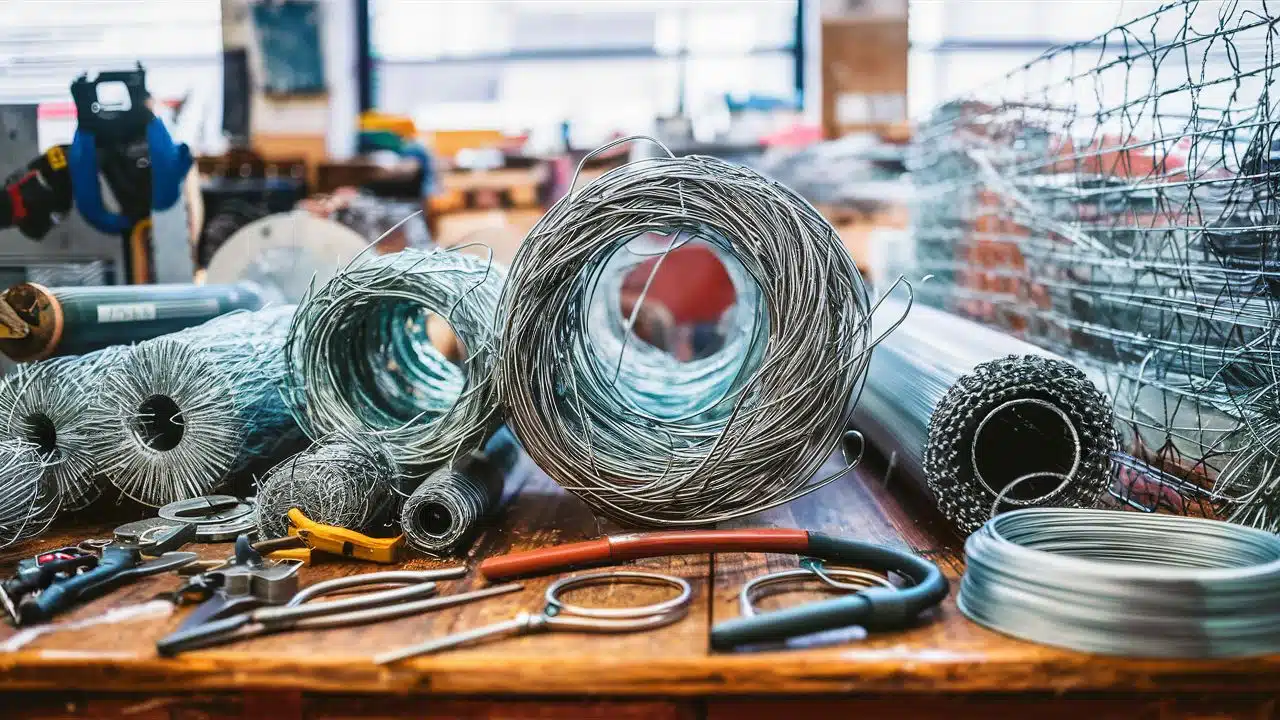
Types of Galvanized Wire
Galvanized wire is produced and supplied in various types based on the chemical composition of the steel, the galvanizing method, and different applications. Familiarity with these types can help make better and more appropriate choices for specific projects. Here, we introduce some of the most common types of galvanized wire:
- High Carbon Hot-Dip Galvanized Wire: This type is made from high-carbon steel (0.6 to 0.82 percent) and is hot-dip galvanized. Its high tensile strength and hardness make it suitable for structural applications.
- Low Carbon Hot-Dip Galvanized Wire: It has a lower carbon content (0.1 to 0.25 percent) and is more flexible compared to the previous type. It is suitable for making cables and enclosing meshes.
- ARMOR Hot-Dip Galvanized Wire: This wire also contains aluminum in its composition and, as a result, shows higher resistance to corrosion in very severe environments.
- ACSR Hot-Dip Galvanized Wire: Short for Aluminum Conductor Steel Reinforced, it has a central core of galvanized steel and outer strands of aluminum. It is mostly used for power transmission lines.
- ACSR fishing Hot-Dip Galvanized Wire: A type of ACSR designed to resist higher mechanical loads such as wind, snow, and ice.
- Galfan Hot-Dip Galvanized Wire: Instead of zinc, this wire is coated with a zinc-aluminum alloy, which has exceptional corrosion resistance.
- Cold Galvanized Wire: In this galvanizing method, the steel wire is immersed in galvanizing liquid at a lower temperature to achieve a thinner and more uniform coating.
The selection of the appropriate type of galvanized wire depends on the project site’s weather conditions, applied forces, expected life, and available budget. It is recommended to consult with experts to choose the best option for your project.

Galvanization Process: How to Produce Resistant Wire
One of the most important advantages of galvanized wire compared to other types of wire is its high resistance to corrosion and adverse weather conditions. This resistance is achieved through the galvanization process, in which a thin layer of zinc is coated on the surface of the base metal (usually steel). In the following, we will discuss the details of this process and how resistant wire is produced.
Hot-Dip Galvanization Process:
- Pre-treatment: First, the steel wire must be completely clean and free of any contamination, such as oil, grease, or rust. This step is usually done using an acidic or alkaline solution.
- Acid pickling: After cleaning, the steel wire is immersed in a bath containing hydrochloric acid or sulfuric acid to completely wet its surface. This ensures that the zinc particles adhere better to the metal surface.
- Molten zinc bath: The steel wire enters a bath containing molten zinc at a temperature of about 460 degrees Celsius. At this stage, a layer of zinc settles on the metal surface and combines with it.
- Cooling: After exiting the molten zinc bath, the galvanized wire should be slowly cooled to stabilize its molecular structure.
- Quality control: Finally, the quality of the galvanized layer is examined in terms of thickness, continuity, and adhesion to ensure compliance with established standards.
Cold Galvanization Process:
This method is suitable for wires with smaller diameters and is performed at a lower temperature than the hot-dip method. In cold galvanization, the surface of the steel wire is first coated by electroplating and then immersed in a zinc solution to form the zinc layer.
By understanding the galvanization process, you can better understand why galvanized wire is highly resistant to corrosion and suitable for use in harsh and adverse conditions. This process ensures that the wire has a longer lifespan and reduces maintenance and repair costs.
5 Reasons for the Superiority of Galvanized Wire Over Other Materials
Introduction: Choosing the right type of wire for construction projects, industrial applications, and urban infrastructure is crucial. Galvanized wire, with its unique properties, is considered a superior option compared to other types of wire. In this section, we will examine the 5 main reasons for the superiority of galvanized wire.
- Exceptional resistance to corrosion and rusting
The most important advantage of galvanized wire is its high resistance to corrosion and rusting. The galvanization process, by covering the metal surface with a thin layer of zinc, creates a protective shield against destructive environmental factors. This feature makes galvanized wire highly suitable for use in harsh and adverse weather conditions. - Longer lifespan and reduced maintenance costs
Due to the high corrosion resistance of galvanized wire, this type of wire has a longer service life compared to other types. As a result, there will be no need for frequent replacement or repair, and the associated costs will be reduced. This is especially significant in large projects and urban infrastructure, leading to considerable cost savings. - High strength and mechanical resistance
In addition to corrosion resistance, galvanized wire also has high strength and mechanical resistance. This property makes it very suitable for applications such as power cables, protective meshes, wire ropes, and similar cases. - Environmentally friendly
Compared to other types of wire that may contain toxic or environmentally harmful substances, galvanized wire is considered an environmentally friendly option. The zinc used in the galvanization process is a natural and recyclable material. - Suitable electrical conductivity
Galvanized wire has good electrical conductivity. This feature makes it suitable for use in power distribution systems, grounding connections, and other electrical applications.
Considering these 5 main reasons, it can be understood that galvanized wire is a superior option compared to other types of wire, and choosing it can bring significant benefits in terms of quality, cost, and environmental compatibility.

5 Factors Affecting the Price of Galvanized Wire
When purchasing galvanized wire, one of the most important factors to consider is its price. The price of galvanized wire can be influenced by various factors. In this section, we will examine the most important factors affecting the price of galvanized wire so that you can make a more informed decision.
- Type and quality of the base metal (steel)
One of the most important determinants of the price of galvanized wire is the type and quality of the base metal used for its production. Usually, high-quality steel with a suitable carbon percentage is used to produce galvanized wire, which will affect the final price of the product. - Wire thickness and diameter
The thickness or diameter of the galvanized wire is another determinant of price. Wires with larger diameters require more base metal and galvanized coating, thus having a higher price. - Galvanization process (hot-dip or cold)
As explained in previous sections, the galvanization process can be done by hot-dip or cold methods. The hot-dip method is usually more expensive than the cold method because it requires higher temperatures and more complex equipment. Therefore, hot-dip galvanized wire usually has a higher price compared to the cold type. - Transportation costs
Considering the heavy weight and large volume of galvanized wire, transportation costs can constitute a significant portion of the final price. These costs depend on the transportation distance, type of vehicle, and road conditions. - Market supply and demand
Like many other products, the price of galvanized wire is also influenced by its supply and demand in the market. During periods of construction recession or when supply is high, prices may decrease, while during boom periods and high demand, prices increase.
By understanding these factors, you can make a more informed choice and find the best price for the quality of galvanized wire you require.
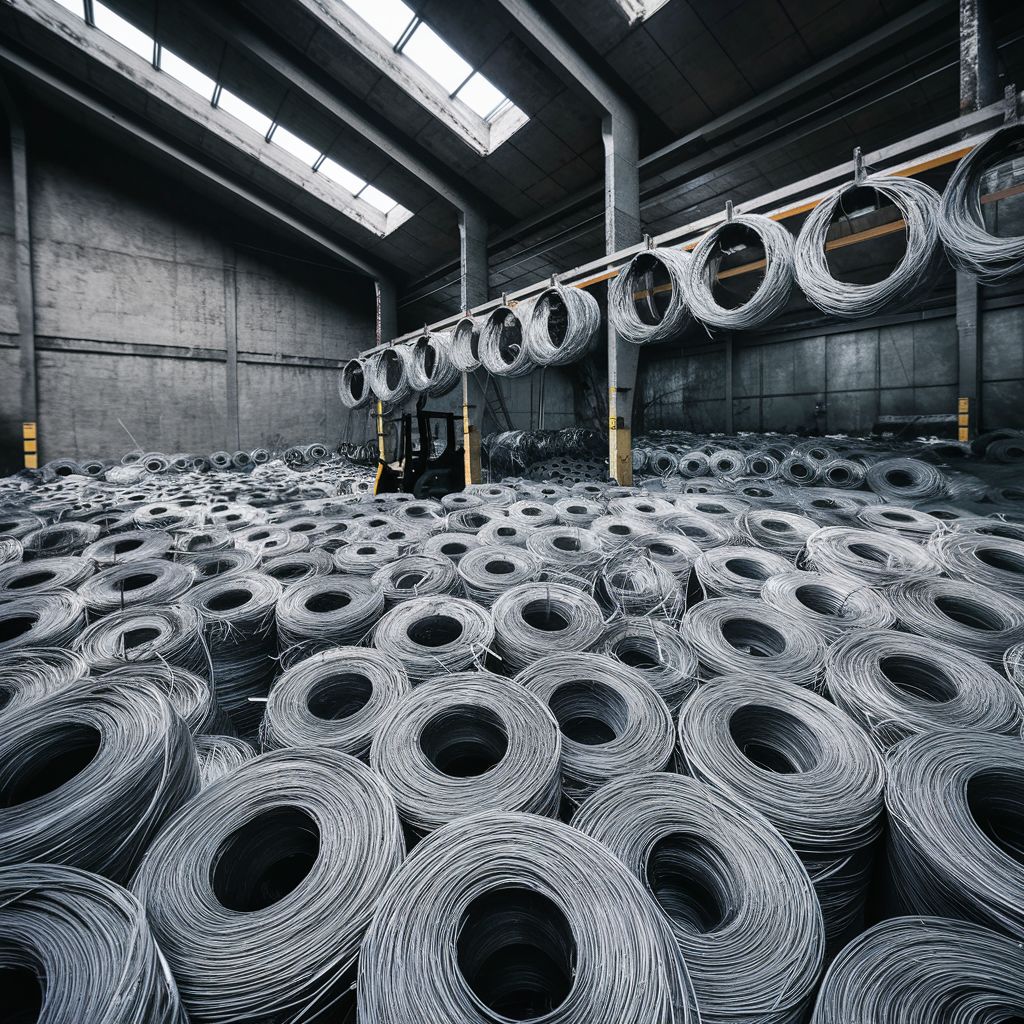
How to Choose the Best Wire Size and Thickness for Projects
After understanding the advantages of galvanized wire and the factors affecting its price, the next step is to choose the appropriate size and thickness for your specific project. Selecting the correct size of galvanized wire is not only crucial in terms of performance and safety but can also impact the final project costs. In this section, we will explore different methods for determining the suitable size and thickness.
- Calculating the load and forces on the wire
One of the most important factors in choosing the size of galvanized wire is the amount of load or forces the wire is expected to withstand. These forces can include the weight of suspended objects, tension, pressure, and more. By accurately calculating these forces, you can select an appropriate size that has sufficient strength to bear them. - Type of application and environmental conditions
The type of application and environmental conditions in which the galvanized wire will be used is another determining factor for the appropriate size. For example, if the wire is to be exposed to harsh weather conditions or corrosive environments, it is better to choose a larger size for greater corrosion resistance. - Construction standards and regulations
In many construction projects and urban infrastructure, there are specific standards and regulations for selecting the size of galvanized wire. These standards are usually determined based on safety factors, applied loads, and type of application. Compliance with these standards is essential to ensure the safety and proper functioning of the project. - Recommendations from vendors and experts
Finally, if you are still unsure about choosing the appropriate size and thickness of galvanized wire, you can benefit from the recommendations of reputable vendors and experts in this field. With sufficient experience, they can suggest the suitable size considering the details of your project.
By considering these points, you can select the best size and thickness of galvanized wire for your project and benefit from its advantages, such as strength, safety, and long service life.
More resources:
We recommend the following sources along with the website address for further reading on the key points for buying galvanized wire:
- “Galvanized Steel Wire: Properties, Uses, and Applications” by Swati Joshi, published on Thomas Net.
- “Galvanized Steel Wire: Types, Properties, and Applications” by AZoM.
- “Galvanized Steel Wire: A Comprehensive Guide” by Wire & Cable Your Way.
- “10 Key Factors to Consider When Buying Galvanized Steel Wire” by Wyre Fencing.
These resources provide useful information on the features, types, uses and important considerations when buying galvanized wire that can help you learn more.




